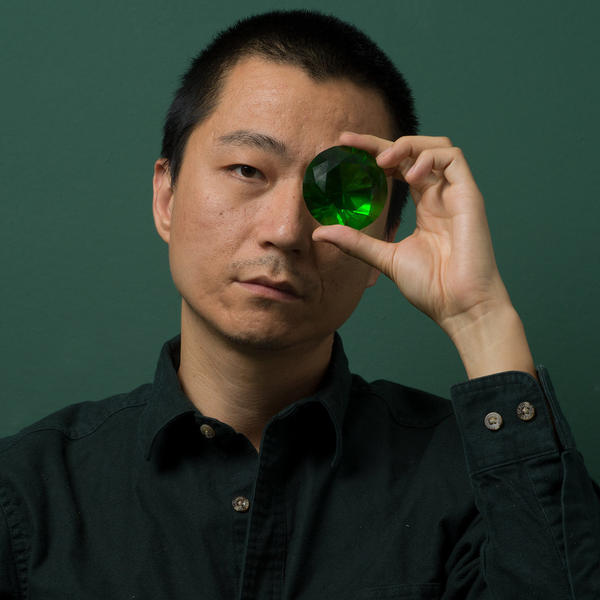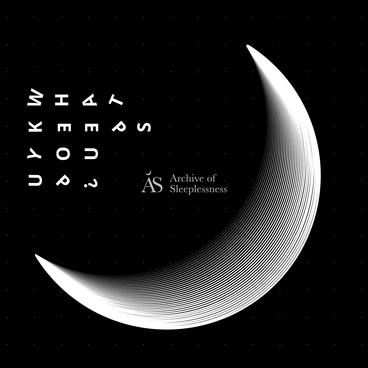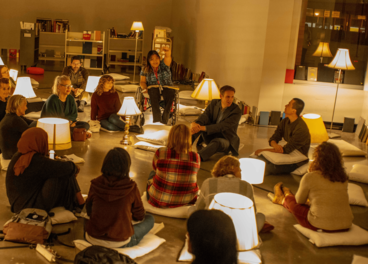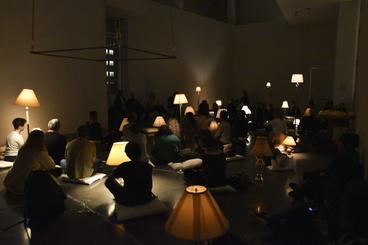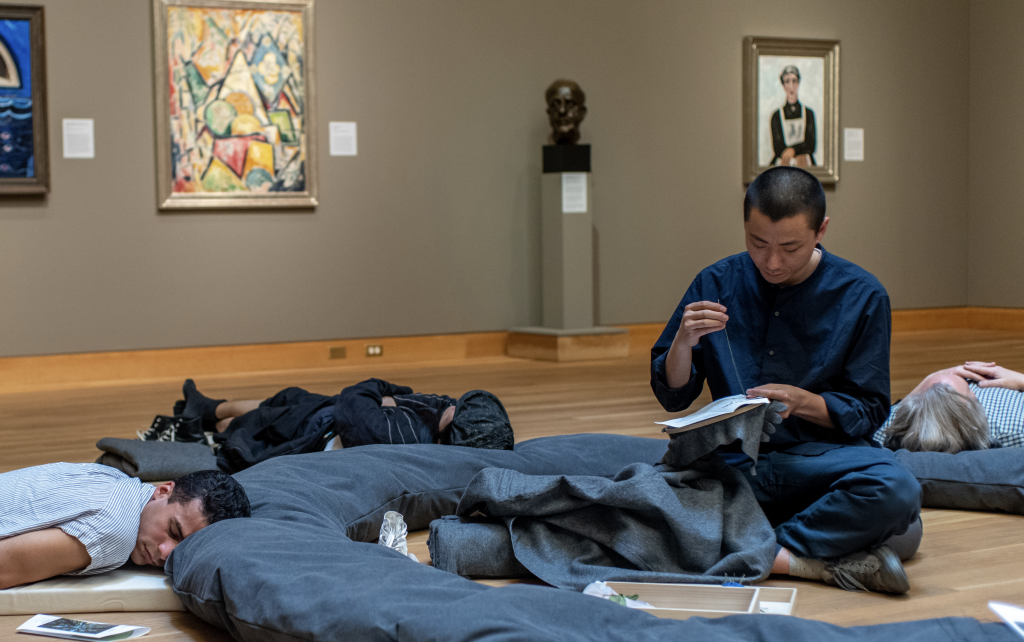
FEATURED ESSAY
Peng Wu and the Art of Sleep a reflection by Susan Armington
Peng Wu had a problem with sleep. Night after night, the Chinese-born artist lay sleepless. At first it was the excitement of grad school in Minneapolis. Then it was the boredom of work and the desire to stay up late to make up for meaningless days. Finally it was a habit; when he’d close his eyes and stretch out in bed, his mind couldn’t let go. For an hour, then two, then whole nights at a time. Worries flooded him, immigration concerns, ideas for art he never had time for, and worst of all, the fear itself of not being able to sleep.
Then he did something surprising. He turned his sleeplessness into art. As artist-in-residence at the Weisman Art Museum, he began a project — a collaboration with the Medical School at the University of Minnesota neurologist Dr. Michael Howell — on sleep.
Peng, a boyish 37, with clear eyes and black cropped hair, arrives on foot to meet me at the Canteen Café. He’s wearing a loose red sweater, baggy pants, and gray sneakers. On top of that, he’s zipped a short olive green jacket, and a full third of the sweater hangs out the bottom. When he sees me, he gives an easy grin — like when I’d first met him at the museum and he’d invited me to his public event.
Now we discuss the event, “Can Sleep be Practiced?” over mugs of rooibos tea. I recall entering a dusky gallery and Peng instructing the crowd to say goodbye to the day by watching in silence for ten minutes as the sun set through the large windows of the Riverview Gallery.
“I was so moved at people’s response,” he says, stroking his chin, where a day’s growth of hair is visible. “When they got so quiet, so standing still, looking at the gray sky, fog starting to set down ... I think inside of them already was seeking this quiet, a peace moment…”
Next he led us into another darkened gallery he’d set up for the event. Old-fashioned table lamps set on the floor spread a golden glow over flat white pillows scattered like stepping stones. The lamplight rose and fell as visitors found seats on the pillows.
In the light’s ebb and flow, Peng led a discussion of sleep and sleeplessness with four scientists seated beside him.
“With access to light 24/7,” his collaborator Dr. Howell said, “humans are literally drowning in light. Compare the 300 lumen hours per year typical of our past.”
Other experts took turns parsing their words and launching them out into the crowd: brain circuitry, circadian rhythms, hyper-arousal from trauma, sleep-state misconception; and lastly the importance of practice for sleep — how not to try to sleep, in doctor's word: the more you try, the further you push sleep away.
Peng leaned back, legs crossed, adding a story here, a question there, and from time to time, a big sigh as he searched for the right word or feeling. His hand would arch out gently towards the audience then back towards the panel, like a slow metronome.
“What do you think artists add to a project with scientists?” I ask Peng now.
He blows on the surface of his tea and sets it down.
“Artists are good at wandering around, asking questions. We’re less concerned with a specific goal or result, more with sharing stories, building connection over shared experience — not just what works, what doesn’t.”
He pauses, wrinkles his forehead, and runs a hand back to front across his cropped hair.
“My art is about connecting people — in isolation, displacement — people need to be somehow connected to others, less lonely.”
He picks up his nearly abandoned tea cup and drinks.
“What about your “Archive of Sleeplessness?" I ask. At the event’s end, he’d given us little yellow light bulbs and a task: notice the first morning light, then snap a photo of something in the light and email it to his archive.
“How’s that going?”
Peng suddenly lights up, a big grin on his face as he pushes his cup away and pulls out his phone. He bends over poking it with his thumbs. His face beams.
“Yeah, yeah…” he searches, ”Look at this one!” He shows me a photo of light on someone’s foot in the dark. “Or this,” switching to a shot of branches and shadows. “Or this," and he flashes me an image of deep blue sky.
“I found it so touching,” he says. “When somebody sends me an image, I feel I need to return the favor, to send them my own morning sunlight."
“You mean you sent your own photo back to people?” I ask.
He laughs and shows me his photo that he emailed in response this morning. “It’s becoming a correspondence of sunlight,” he smiles. “Kind of like vibrating."
“When we’re separate, we’re just individuals. But we can echo each other, like this.” He nods happily. “Now we are connected.”
Sources: Notes from Weisman event, March 13. Interviews with Peng at Canteen Café, March 15 2:30 p.m. and March 25, 2:30 p.m. Email on March 27, 2019.
Peng Wu
Peng Wu is an interdisciplinary artist and designer dedicated to creating socially engaged art in public space. His work combines the power of design thinking with contemporary art strategies to address various urgent social issues including immigration, health disparity, queer rights, etc.
